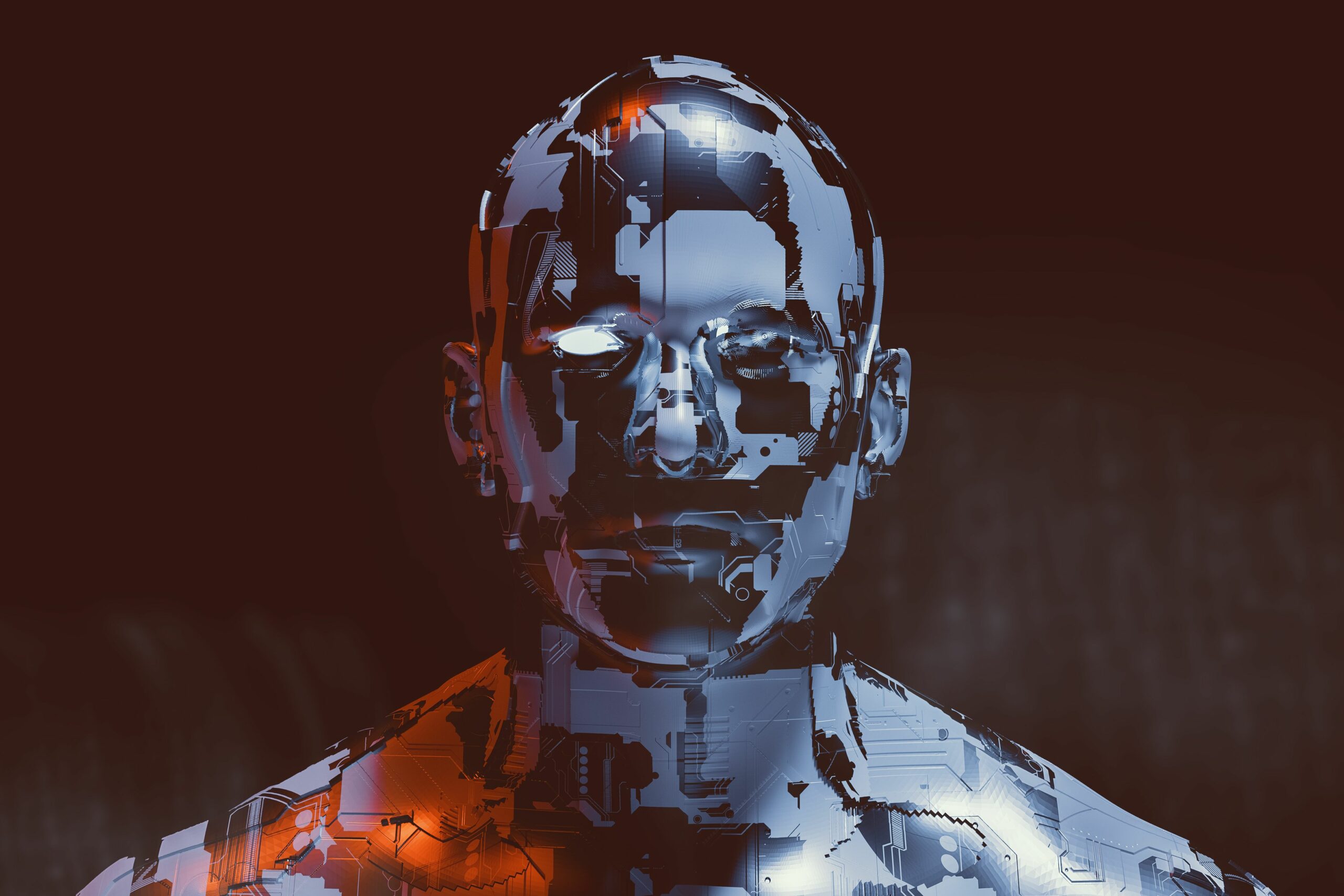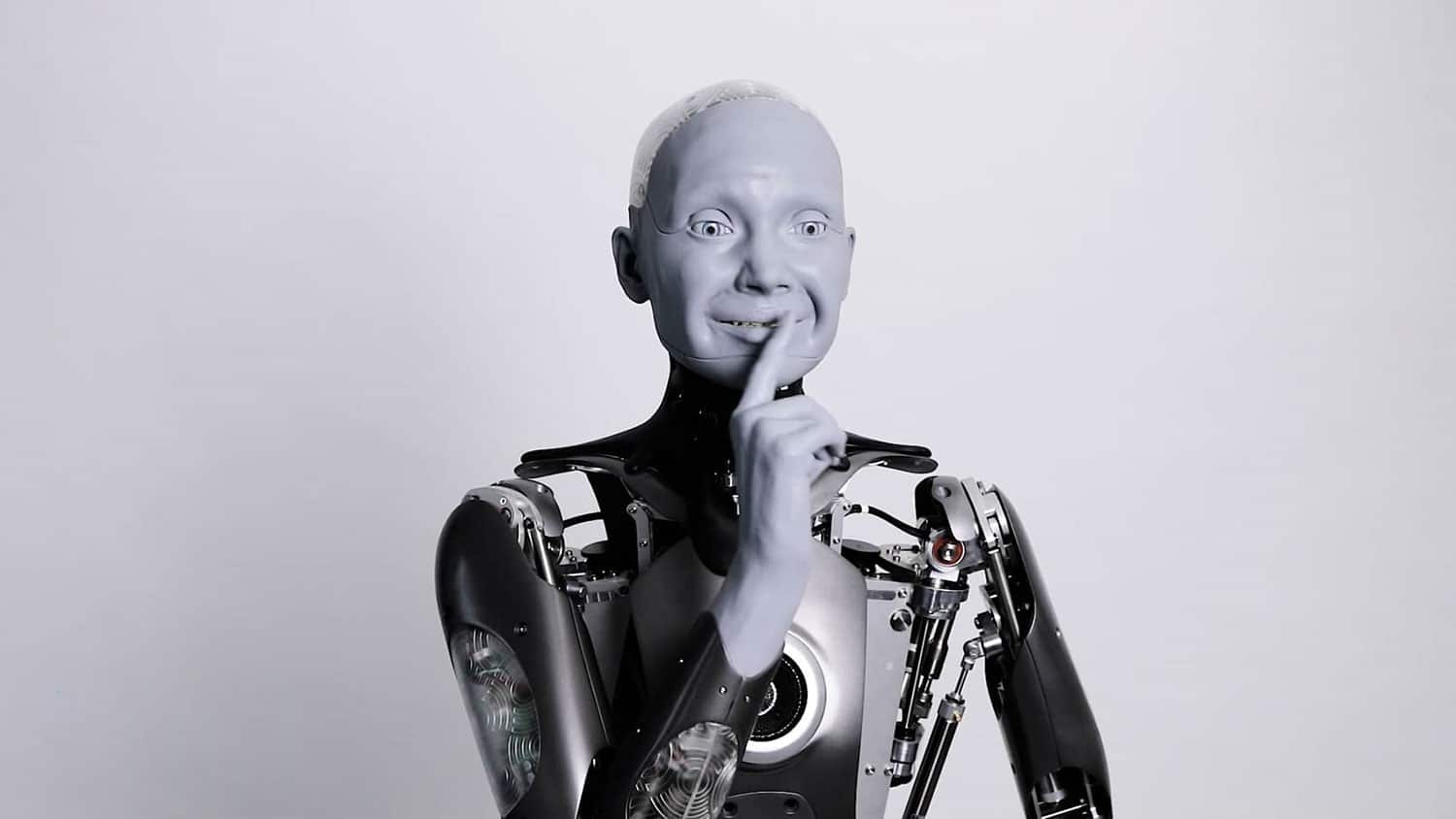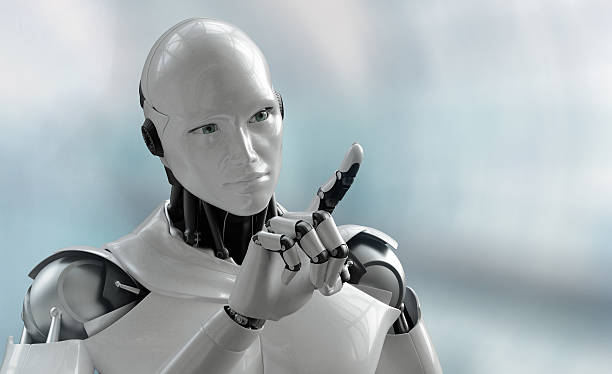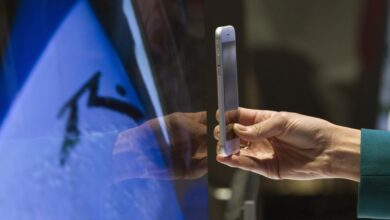The world’s first AI humanoid was made from waste material by a computer science teacher

The world’s first AI humanoid was made from waste material by a computer science teacher
The number of robots developed worldwide has increased dramatically during the last two decades. The expense of body parts for human-like robotics, on the other hand, discourage tiny entrepreneurs with huge ideas. Over 3000 industrial robots were installed in the country in 2017. Furthermore, Asia will continue to be the largest market for industrial robots in 2020. With nearly 26,300 units, India ranked third on the list, up 15% from the last year.

What Is A Humanoid Robot?
A humanoid robot is a machine with the shape of a human body. The design could be for practical goals, such as engaging with human tools and settings, or it could be for experimental objectives, such as studying bipedal walking. A torso, head, arms, and legs make up a humanoid. On the other hand, some humanoids may depict a single bodily part, such as the waist up. Some humanoid robots have heads meant to look like human characteristics like eyes and mouths.
Sophia was created by Hanson Robotics, a Hong Kong-based business, first used in 2016. Sophia was a humanoid robot who took part in several high-profile interviews. Dinesh Patel, a Computer Science teacher, was inspired by Sophia’s engineering to start working on his dream project: creating a low-cost, World’s First Artificially Intelligent Homemade Social & Educational Humanoid Robot out of waste materials.
Patel tells The Logical Indian that building Robot Shalu from the ground up seemed like a tremendous mountain to climb at first, but that nothing is impossible to achieve with determination and desire.

What Will Humanoid Robots’ Future Role Be?
It has been documented that the number of robots will expand during the next decade. According to the Boston Consulting Group, robots will undertake 25% of all labour functions by 2025. This occurs as a result of improved performance and lower expenses. The United States will lead robot adoption, followed by Canada, Japan, South Korea, and the United Kingdom. The four industries driving the push are computer and electronic items, electrical equipment and appliances, transportation equipment, and manufacturing.
By 2025, they will account for 75% of all robotic installations. The rise of robotics will impact the service business. According to recent research by Berg Insight, by 2026, the service robot base will have installed 264.3 million units. In 2016, service robots were installed in 29.6 million locations around the world.
The service industry’s robots were divided into the following categories:
- With 23.8 million units, floor cleaning robots accounted for 80% of all service robots.
- A total of 4 million unmanned aerial vehicles were sold.
- A total of 1.6 million automated lawnmower units were sold.
- 0.1 million units of automated guided vehicles were installed.
- The total number of robotic milking units was 0.05 million.
Humanoid robots (including assistant/companion robots), telepresence robots, powered human exoskeletons, surgical robots, and autonomous mobility robots were among the remaining sectors. They were reported to have installed less than 50,000 units in all.
Humanoid robots have the greatest potential to become the industrial tool of the future while being one of the minor groups of service robots now on the market. Human-looking robots have been developed by companies such as Softbank Robotics for usage as medical aides and educational aids. Humanoid robots are now flourishing in the medical field, particularly companion robots.
Professor Maja Matari of the University of Southern California has been connecting robots with patients since 2014. Her robots benefited stroke recovery victims with upper extremity exercises in 2015 and helped children with autism replicate the actions of socially supportive robots. When the robot promoted and stimulated the patients, they were more receptive to the exercises.
On the other hand, humanoid robots are now being used to perform engineering jobs. Joint Robotics Laboratory and Airbus Group collaborated on a four-year research effort to employ humanoid robotic technology in aeroplane manufacturing facilities. Airbus hopes to relieve human operators of some of the more complex and risky tasks on aeroplane production lines by utilising humanoid robots. The human bosses might then focus on more important responsibilities. The main challenge is that these robots must work in limited locations and must be able to move without clashing with the surrounding things.
The new HRP-2 and HRP-4 robot models were developed by the Joint Robotics Laboratory using a novel robotic movement technique known as multi-contact locomotion. This sort of robot can climb ladders and access limited locations because it uses its whole body to touch its environment rather than just its feet. The robot’s various points of contact aid in its stability and provide superior force control when performing a task. Finally, the anthropomorphic nature of these robots allows them to operate in various contexts.

Advantages of Humanoid Robot
It is a robot with a torso with a head, two arms, and two legs, although some humanoid robots may model only part of the body, for example, from the waist up. They may also have a face, eyes and a mouth. Androids are humanoid robots built to resemble the male human, and Gynoids are humanoid robots built to resemble the female human.
It has a head designed to mimic human facial features such as eyes and lips. It can be used for functional objectives, such as engaging with human tools and settings and for experimental purposes, like the study of locomotion.
So long as they have the required software, humanoid robots can accomplish any human task. They can be employed for future dangerous and far space research missions, serve as companions and aides for people in everyday life, and be used as ultimate helps in artificial and natural disasters, despite their realistic appearance.Many people throughout the world will benefit from humanoid robots, and we may utilise them for educational purposes as well. Teachers are using robotics to teach students how to programme, and robot teachers are also being used to engage with youngsters and teach them simple tasks.
Many people will benefit from these humanoid robots; they will look after the sick, collect trash, guard houses and offices, and give directions on the street. Life in society with Humanoid Robots will be different, but it will be very efficient, and the economy will grow.Corporations and businesses will also be grateful for the robots because they can replace jobs, resulting in less money being paid to employees. They can be used as entertainers and in commercial spaces, but they will not be performing major tasks. These robots can now sing and dance and look almost human while doing so.
Most artificial intelligence does not require a body to function; however, the human body is tough to replicate, and there is still much more work to be done; they can help assist older adults living in their own homes to respond to disasters, and there have been significant advances in the engineering and control aspects of humanoid robotics.
Humanoid robots can assist the military; they can move, gather information (via sensors) in the real world, and interact with it; they lack some features of the human body; they include structures with variable flexibility, which provide safety (for the robot and people); and redundancy of movements; and law enforcement will benefit from them.
Humanoid Robots can look after the elderly and can be designed to guarantee that they are not rude. They can also be around an older adult all of the time and care for their needs and safety. They do not make mistakes, which is also advantageous in the workplace.
On the other hand, Humanoid Robots can work in factories and perform the same thing over and over again without making a mistake. On the other hand, humans will get bored of doing the same thing repeatedly and may make a mistake.
Humanoid Robots can perform a wide range of tasks that humans can perform and tasks that humans are unable to function. The sale and development of these Robots will aid in the economy’s growth. These robots can make companies more efficient and spur the economy through revenue growth. Humanoid Robots do not make the mistakes that certain countries find helpful. They prefer to have robots do menial work rather than low-wage immigrants from other countries. People prefer robots since they do not make mistakes and are less likely to be impolite.
Humanoid Robots can be used with children to teach or read to them. They can greatly benefit youngsters with autism, help the sick and old, and be utilised in unclean or risky tasks. Robots can use the tools and operate equipment and vehicles meant for the human form, making them appropriate for various procedurally-based occupations such as receptionists and automotive assembly line employees.
Advanced humanoid mechatronic systems with complex sensorimotor capabilities result from great advancements in science and technology. It is an emerging and challenging research field that has received much attention in recent years and will continue to play an essential role in robotics research.

Disadvantages of Humanoid Robots
Depending on how advanced the robot is, a humanoid robot can be highly expensive. As humanoid robots become more widely available in society, only the wealthy will afford them. Jobs will be lost as a result of it. Although this will benefit many businesses, it will be detrimental to those who work in specific sectors, such as nurses, pharmacists, and secretaries.
Advanced humanoid robots will do a wide range of duties, but they will be expensive. It is a high expense that many middle and low-income families cannot afford; the price of humanoid robots is high enough that not everyone can afford one; Understanding human-like information processing and the underlying mechanisms of the human brain in coping with the real environment is one of the common difficulties handled in humanoid robotics.
If these robots perform these mundane tasks for you, you will grow overly reliant on them. If you have robots who take out the garbage, do the dishes, cook the food, and keep an eye on the kids, If you have such robots doing your duties for you, you will become lazy and dependent. Another flaw in the growing “humanoid robot” is this.
The humanoid robot will harm many people because it will take their employment.
The robots will have an impact on middle-class and low-income families. Although many upper-class members will be able to hire these humanoid robots to perform duties they dislike, middle-class families will be unable to buy them, leaving them to perform the tedious tasks themselves.
Automation systems and robots can replace much employment. Humanoid robots will eventually take over practically all traditional labour activities in society, including firefighting, restaurant service, manufacturing, agriculture, construction, and community police. Our economy will suffer if humanoid robots take over employment previously held by middle-class individuals.

The Inception Of The Project
“In the start, I was inspired by the movie ‘Robot,’ by the much-loved actor Rajnikanth, and I was inspired to make something like that,” Patel said of how he got started on Robot Shalu. In 2010, though, the prospect of creating something similar seemed grim.
After the movie, I thought to myself, “This isn’t possible.” Then the world-famous Sophia robot was made, and I realised that my ambition was not unattainable. That robot is being created by a large corporation with cutting-edge technology and many hands on deck, but it dawned on me that we could do something similar on a much smaller scale. I’m a computer science instructor who wanted to inspire my pupils to pursue careers in technology and artificial intelligence.”
Patel was well-versed in coding; therefore, generating the requisite software for the humanoid was well within his technological capabilities. Assembling the robot’s physical body parts, on the other hand, appeared to be a significant achievement. He wrested control of many businesses to obtain 3D printed body parts for his project. However, the companies’ estimated costs were as high as Rs 25 lakhs. As a result, he felt that using rubbish for the project might be a more environmentally beneficial and sustainable choice.
He would collect trash from local businesses and pick up anything he believed useful. He bought aluminium and thermocol and a variety of other minor electronic components. Patel went with plaster of Paris on the face.

Functions Performed By Shalu
“You have to connect it to a plug for power supply and connect it to the internet for the Robot to start,” Dinesh revealed to The Logical Indian while detailing the functionalities of Robot Shalu. Even after meeting you for the first time, she can recognise you, recall your date of birth, and wish you a happy birthday. She can make phone calls and send emails. Aside from that, she can recognise ordinary household things and understand human humour. She remembers when you’re attempting to make a joke around her and can respond in kind.
She can give you weather forecasts in various areas and even handle simple math problems. These are only a few of the many tasks she is capable of. When asked why he chose to give the robot a female body, Patel told The Logical Indian, “I have never had a girl child and have always wanted for one. I chose to create a girl who may be India’s daughter. I was born and reared in a hamlet in northern India, and I’d always seen ladies in the family wearing veils to give respect to the elderly, which is why Shalu, my robot, wears one.
Second, I dedicated this robot to India’s daughters, and it was heavily promoted as part of the “Beti Bachao Beti Padhao” campaign. I wanted to convey the notion that people should not be put off by seeing women and should not dismiss them because this robot is intelligent and skilled in various areas. Even though Robot Shalu appears to be a simple robot, she can speak in 47 languages and is well-versed in a wide range of subjects.”

The Challenges Faced
Patel revealed that Robot Shalu currently welcomes humans with a handshake while detailing the numerous hurdles he faced. His first intention was to allow her to fold her hands in the form of a ‘namaste,’ but he could not do so because the electronic parts utilised were all from the local market. The robot’s lips had to be synced correctly, which was the next hurdle. However, because plaster of pairs is a heavy substance, enabling the robot to do so was problematic.
While he still wants to improve the humanoid’s lip-sync feature, he’s content with the absolute minimum for now. Patel’s wife was the first person to discuss the humanoid project. She believed in the project from the start, and her faith was increased when he showed her the primary machine that could reply when she was talked to. After seeing his ideal project become shape, his parents and other relatives were shocked.
On the other hand, Patel recalled with glee, “My pupils gave me the most positive feedback. I can’t express how I felt when I told them about the initiative and showed them the same “.

A Message For All
Patel intended to send the impression that the average Indian is technologically savvy with Robot Shalu. “Money and labour are vital, but they are not the end-all and be-all of everything. Anyone can do anything they want; all you need is passion and perseverance to succeed. “Before signing off, he informs The Logical Indian. Dr Ramesh Pokharial ‘Nishank’, India’s Education Minister, has named Robot Shalu the “Most Innovative Use of Science and Technology” for the year 2021 by the Jagranjosh Education awards. Patel’s achievements have earned him a position in the India Book of Records and the Pratishtha World Records.
Edited and published by Ashlyn Joy




